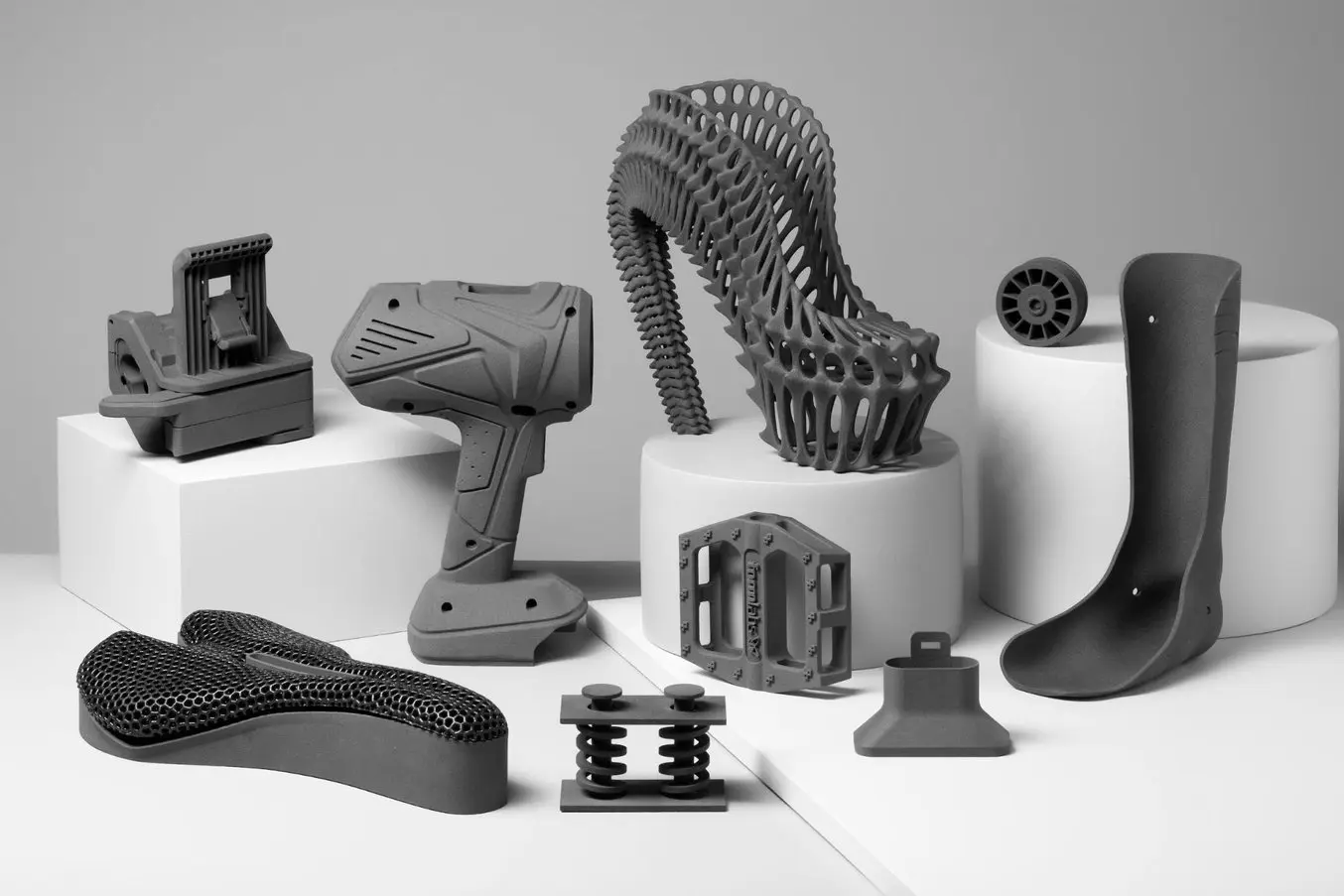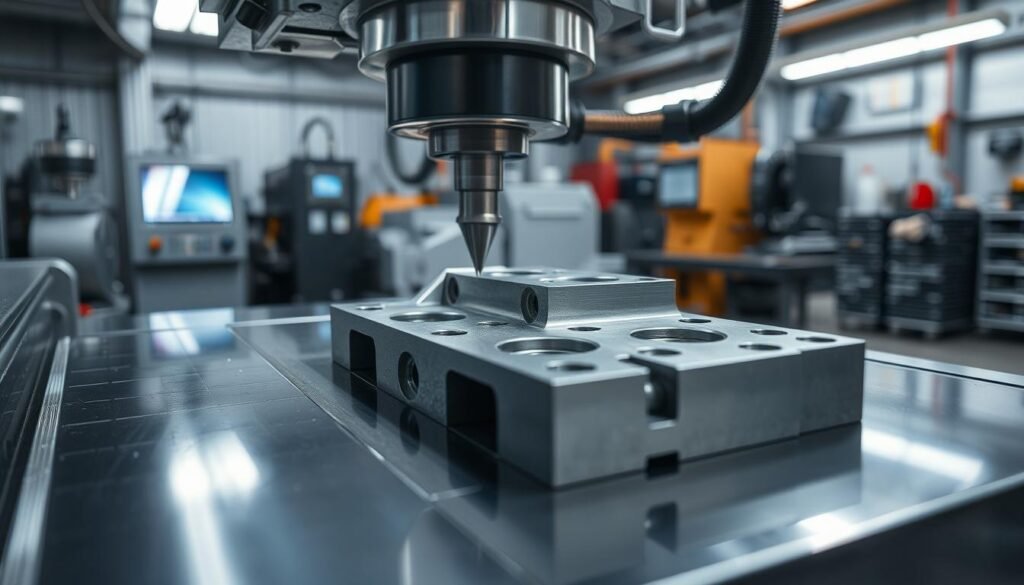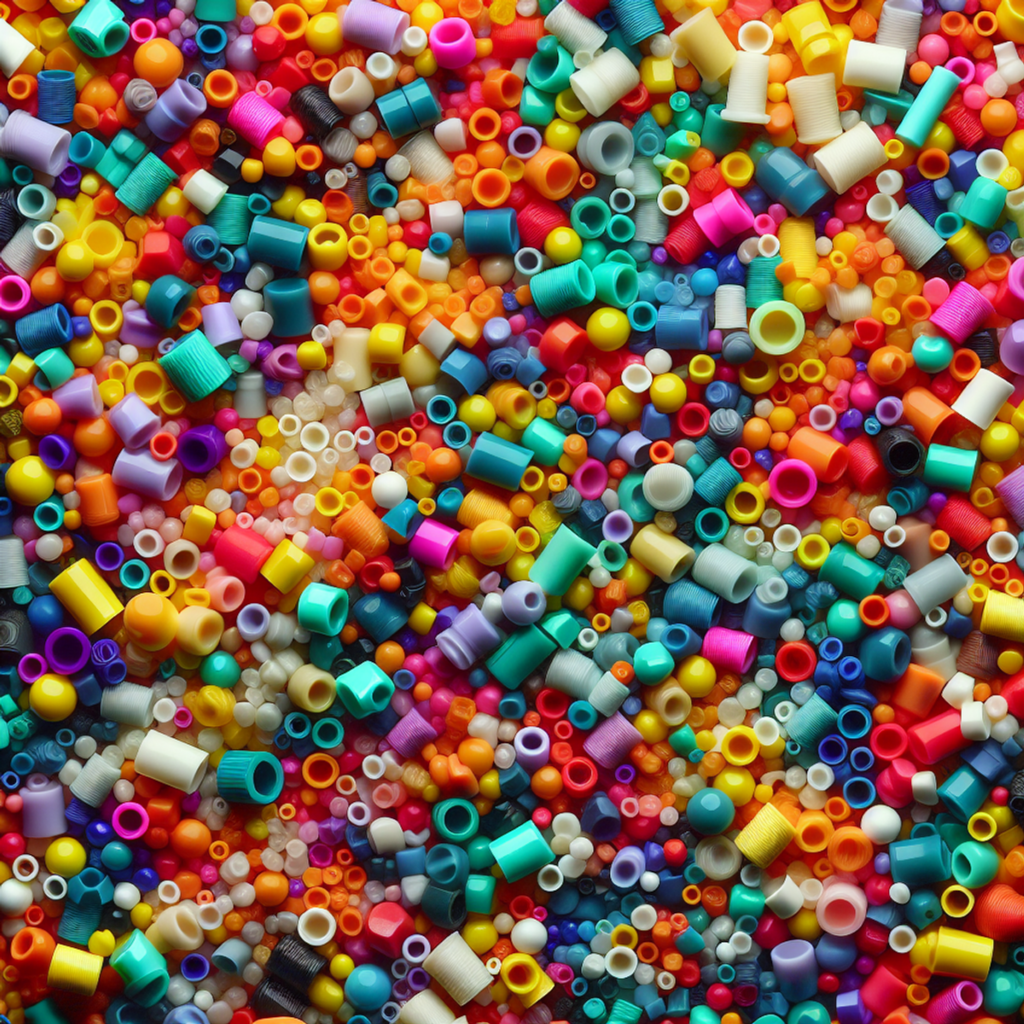Introduction
3D printing has revolutionized various industries by providing rapid prototyping and customized manufacturing solutions. However, the increasing use of this technology has also contributed significantly to plastic waste generation. Understanding the environmental impact of 3D printing is crucial as the industry continues to expand.
In this guide, we will explore different techniques and processes for recycling 3D printing materials. The focus will be on utilizing sustainable solutions such as plastic extrusion machines and plastic recycling machines to manage plastic waste effectively. These machines offer multiple benefits including high efficiency, energy savings of up to 30%, durability, and effective recycling processes.
Throughout this guide, you will learn about:
- Different types of plastics used in 3D printing
- The benefits and challenges of recycling these materials
- Step-by-step recycling processes using advanced machinery
- Utilization of recycled filament in 3D printing projects
The Basics of 3D Printing Materials and Plastic Waste
Understanding the composition of 3D printing materials is crucial for effective recycling through plastic extrusion machines. Different types of plastics used in 3D printing present unique challenges and opportunities for recycling.
Common Types of Plastics
1. PLA (Polylactic Acid)
- Biodegradable and compostable.
- Derived from renewable resources like corn starch.
- Ideal for beginners due to its low print temperature and ease of use.
2. ABS (Acrylonitrile Butadiene Styrene)
- Durable and strong.
- Requires higher print temperatures.
- Produces fumes during printing, necessitating proper ventilation.
3. PETG (Polyethylene Terephthalate Glycol)
- Combines the benefits of PLA and ABS.
- More flexible than PLA but stronger than ABS.
- Excellent layer adhesion, reducing warping issues.
4. Nylon
- Extremely strong and flexible.
- Absorbs moisture easily, requiring careful storage.
- Suitable for functional parts due to its high durability.
5. Polystyrene
- Lightweight and easy to print.
- Often used in educational settings.
- Susceptible to breaking under stress compared to other materials.
Key Takeaway
Each type of plastic requires specific handling during the recycling process. For effective recycling through plastic extrusion machines, you must understand:
- The melting points.
- The properties affecting mechanical strength and flexibility.
- The potential need for blending with virgin materials to improve filament quality.
By mastering these elements, you can optimize your recycling efforts and contribute to a more sustainable 3D printing ecosystem..
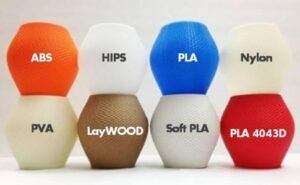
Benefits and Challenges of Recycling 3D Printing Materials
Recycling 3D printing materials has several advantages that align with the principles of a circular economy. It not only reduces waste but also creates a sustainable system where materials are reused instead of thrown away.
Advantages
- Reduction in Plastic Waste: The main benefit is the significant decrease in plastic waste. By recycling used materials, you prevent them from ending up in landfills or oceans.
- Cost Savings: Using recycled filament can be cheaper than buying new material. This is especially useful for hobbyists and small businesses that use 3D printing a lot.
- Resource Efficiency: Recycling reduces the need for making new plastic, which saves natural resources and lowers energy usage.
- Environmental Impact: Another important advantage is reducing carbon emissions. Recycling processes usually require less energy compared to making new plastics.
Challenges
Despite these benefits, there are also some challenges when it comes to recycling 3D printing materials.
- Material Quality: Recycled filament can sometimes have problems like uneven thickness and brittleness. These issues can affect the quality and reliability of prints, which is a big obstacle for precise applications.
- Processing Complexity: Recycling involves multiple steps such as shredding, drying, and extruding. Each step needs specific equipment and knowledge, making it complicated for people without technical expertise.
- Contamination Risk: Making sure that recycled plastic is pure is crucial. Impurities can lower the quality of the filament, resulting in poor printing performance and potentially harming the printer.
- Limited Material Types: Not all plastics used in 3D printing can be easily recycled. For example, while PLA is relatively simple to recycle, materials like ABS and Nylon are more challenging due to their chemical properties.
Balancing Pros and Cons
Implementing a circular economy approach in 3D printing means finding a balance between these advantages and challenges. Understanding the details involved will help you make better decisions about using recycled materials in your projects. Using a combination of new and recycled materials can often reduce some drawbacks, offering a practical solution that combines sustainability with performance.
Exploring different types of plastic extrusion machines can also make this recycling process more efficient, improving both productivity and output quality.
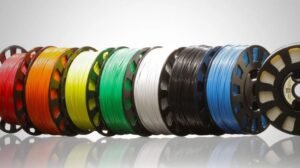
1. Plastic Extrusion Machines: Enabling Sustainable Recycling Processes
Plastic extrusion machines are essential for sustainable recycling in the 3D printing industry. They convert plastic waste into reusable filament, making them crucial for sustainability in the 3D printing industry. Understanding the various types of plastic extrusion machines and their components is essential to maximizing their efficiency.
1.1 Types of Plastic Extrusion Machines
There are several types of plastic extruders, each with unique features that make them suitable for different recycling processes. Here, we will explore the most common types:
- Single-Screw Extruder
- Twin-Screw Extruder
Single-Screw Extruder
The single-screw extruder is one of the most widely used machines for recycling 3D printing materials. It consists of a single screw rotating within a heated barrel, which melts and pushes the plastic through a die to form filament.
Advantages of Single-Screw Extruder:
- Simplicity: Easy to operate and maintain.
- Cost-Effective: Generally cheaper than twin-screw extruders.
- Versatility: Suitable for a wide range of plastics including PLA, ABS, and PETG.
Limitations of Single-Screw Extruder:
- Mixing Efficiency: Less effective at mixing additives or different types of plastics.
- Throughput: Typically lower throughput compared to twin-screw extruders.
Suitability for Recycling:
Single-screw extruders are ideal for small-scale recycling projects or hobbyists looking to recycle their 3D printing waste. Their simplicity and cost-effectiveness make them accessible for those new to plastic extrusion.
Twin-Screw Extruder
Twin-screw extruders utilize two intermeshing screws rotating within a heated barrel. This design allows for more complex processing capabilities.
Advantages of Twin-Screw Extruder:
- Superior Mixing: Excellent at mixing additives and different types of plastics.
- High Throughput: Capable of processing larger volumes of material faster.
- Flexibility: Can handle a broader range of materials with varying viscosities.
Limitations of Twin-Screw Extruder:
- Complexity: More complicated to operate and maintain.
- Cost: Generally more expensive than single-screw extruders.
Suitability for Recycling:
Twin-screw extruders are well-suited for industrial applications where large volumes of 3D printing waste need to be processed efficiently. Their advanced mixing capabilities make them ideal for producing high-quality recycled filament from mixed or contaminated plastic sources.
Understanding these machine types helps you choose the right equipment based on your specific needs and scale of operation.
Important Components of a Plastic Extrusion Machine
Key elements that make up a plastic extruder include:
- Hopper
- Screw(s)
- Barrel
- Heaters
- Die
- Cooling System
Each component plays a vital role in converting waste plastic into usable filament, ensuring the quality and consistency necessary for successful 3D printing projects.
Next, we will delve into the detailed step-by-step process of recycling 3D printing materials through these machines, exploring both mechanical and chemical recycling techniques.
1.2 Important Components of a Plastic Extrusion Machine
Understanding the key components of plastic extrusion machines is essential for anyone looking to recycle 3D printing materials effectively. These machines, whether they are single-screw extruders or twin-screw extruders, share several critical elements that play specific roles in transforming discarded 3D prints and plastic waste into new filament.
1. Extrusion Screw
The extrusion screw is the heart of any plastic extrusion machine. It moves the plastic material through the machine while gradually increasing pressure and temperature. There are different types of screws:
- Single-Screw Extruder: Best suited for simple recycling tasks. It provides consistent melt quality but may struggle with complex mixtures.
- Twin-Screw Extruder: Offers better mixing capabilities and is ideal for recycling composite materials or when additives are required.
2. Barrel
The barrel encases the extrusion screw and serves as a conduit for the plastic material as it gets heated and mixed. The barrel’s design ensures optimal heat distribution and pressure throughout the recycling process.
3. Heating and Cooling System
Controlling the temperature within the plastic extrusion machine is crucial for achieving high-quality recycled filament.
- Heating System: Typically consists of electric heaters placed along the barrel to melt the plastic uniformly.
- Cooling System: Includes fans or water cooling mechanisms that regulate temperatures, preventing overheating which could degrade material quality.
4. Feed Hopper
This component holds and feeds plastic waste into the extruder. It needs to be designed to handle various shapes and sizes of 3D printed waste, ensuring a steady flow into the extrusion screw.
5. Die
The die shapes the molten plastic into filament as it exits the machine. Precision in die design is vital for maintaining consistent diameter, which directly impacts print quality.
With these components working together, plastic extrusion machines can efficiently transform discarded 3D prints and other plastic waste into usable filament, promoting sustainability in 3D printing projects.
2. The Recycling Process: From Waste to Filament
Recycling 3D printing materials through plastic extrusion involves several detailed steps. Understanding these steps can help ensure the production of high-quality recycled filament.
Step-by-Step Process
1. Collection and Sorting
- Collect waste 3D prints and other plastic items suitable for recycling.
- Sort them by type, such as PLA, ABS, PETG, and others. Proper sorting helps in achieving consistent filament quality.
2. Shredding
- Shred the sorted plastics into small pieces using a plastic shredder. This makes it easier to process them in the extrusion machine.
Example of a plastic shredder:
Shredder XYZ is capable of reducing large plastic pieces into uniform granules.
3. Cleaning
- Clean the shredded plastic thoroughly to remove any contaminants or residues. This step is crucial for producing high-quality filament.
4. Drying
- Dry the cleaned plastic pieces to eliminate moisture content, which can affect the extrusion process and the final filament quality.
5. Extrusion
- Feed the dried plastic pieces into the plastic extrusion machine.
- Mechanical Recycling: This involves melting the shredded plastics and extruding them into filament form through a heated barrel.
- Chemical Recycling: For certain types of plastics like PLA, chemical recycling can be employed where chemicals are used to break down polymer chains before re-polymerizing them into new filament.
6. Filament Winding
- The extruded filament is then wound onto spools, ready for use in 3D printers.
Mechanical vs Chemical Recycling
Mechanical Recycling:
- Ideal for most common 3D printing plastics like PLA and PETG.
- Involves physical processes such as shredding, melting, and extruding.
- Benefits: Simple setup, lower cost.
- Challenges: Consistency in filament diameter and brittleness can be issues.
Chemical Recycling:
- Used for more complex materials or when higher purity is required.
- Involves breaking down polymers chemically and reforming them.
- Benefits: Produces higher quality recycled material with fewer impurities.
- Challenges: More complex process, higher cost.
Example: PLA Recycling
PLA (Polylactic Acid) recycling can be performed via both mechanical and chemical methods. Shredded PLA waste is typically cleaned and dried before being fed into an extruder. Adding a small percentage of virgin PLA pellets often enhances the final filament’s properties, ensuring strength and consistency.
Adopting these recycling processes not only reduces waste but also promotes a sustainable approach within the 3D printing community.
Using Recycled Filament in Sustainable 3D Printing Projects
When using recycled filament in 3D printers, there are certain things you should keep in mind to make sure everything goes smoothly. 3D printing with recycled filament can be a bit different from using new filament, but it also brings some unique opportunities.
Important Things to Think About:
- Nozzle Diameter
- Inconsistent Diameter: Recycled filament may have slight variations in diameter. Using a larger nozzle (e.g., 0.6mm or 0.8mm) can help accommodate these inconsistencies.
- Clogging Risks: Smaller nozzles (e.g., 0.4mm or less) are more prone to clogging when using recycled materials. Make sure your nozzle is clean and consider using a wear-resistant nozzle like those made from hardened steel.
- Print Temperature Settings
- Material-Specific Settings: Different recycled materials require different temperatures. For instance, recycled PLA typically prints at 190-220°C, while recycled ABS may need 230-250°C.
- Temperature Stability: Recycled filaments might require more precise temperature control to maintain print quality. Use a high-quality hot end for better temperature regulation.
- Bed Adhesion
- Surface Preparation: Recycled filaments can have varying bed adhesion properties. Use suitable adhesives like glue stick or painter’s tape to improve adhesion.
- Bed Temperature: Adjust the bed temperature according to the material. For example, keeping the bed at around 60°C for PLA and up to 110°C for ABS helps with adhesion.
- Moisture Control
- Drying Filament: Recycled filaments can be more hygroscopic than virgin materials. Store them in a dry environment and consider using a filament dryer before printing.
- Print Environment: Maintain a controlled environment to reduce moisture absorption during printing sessions.
- Layer Adhesion and Print Speed
- Adjusting Speed: Slower print speeds can enhance layer adhesion, especially with recycled filaments that might have variable flow rates.
- Layer Height: A higher layer height can mitigate issues related to filament consistency, but it might affect overall print resolution.
- Blending with Virgin Material
- Mixing recycled filament with virgin material can improve its mechanical properties and printability.
- Aim for a blend ratio that balances sustainability goals with practical performance needs.
Practical Tips:
- Regularly calibrate your printer settings tailored to each batch of recycled filament.
- Conduct test prints to fine-tune settings before embarking on larger projects.
- Keep detailed records of successful settings for future reference.
By carefully considering these factors, you can achieve successful results when incorporating recycled filament into your sustainable 3D printing projects. This approach not only extends the life cycle of materials but also contributes positively to environmental conservation efforts within the 3D printing community.
Advancements in 3D Printing Technology for Enhanced Material Recycling
The future of 3D printing materials is being shaped by innovative technologies designed to enhance recyclability. Emerging trends are paving the way for more efficient recycling processes and sustainable practices.
1. Closed-Loop Systems
Closed-loop systems are at the forefront of these advancements. These systems aim to recycle 3D printed objects back into raw materials, which can then be reused for new prints. By creating a self-sustaining cycle, closed-loop systems significantly reduce waste.
Key features:
- Material Recovery: Efficiently reclaiming used filament and transforming it into high-quality raw material.
- Quality Control: Ensuring that recycled filaments meet stringent quality standards.
- Automation: Streamlining the recycling process with minimal human intervention.
2. Smart Sorting Technologies
Sorting technologies are becoming increasingly sophisticated, making it easier to separate different types of plastics used in 3D printing. Advanced sensors and AI algorithms can identify and sort materials with high precision.
Benefits:
- Increased Efficiency: Reducing manual sorting time and errors.
- Enhanced Purity: Ensuring that recycled materials are free from contaminants.
- Scalability: Adapting to various industrial scales for broader application.
3. Chemical Recycling Innovations
Chemical recycling offers a promising alternative to traditional mechanical methods. This technique breaks down plastics at a molecular level, allowing for the creation of new filaments with properties similar to virgin materials.
Advantages:
- High Quality: Producing recycled filaments with consistent diameter and flexibility.
- Versatility: Applicable to a wide range of plastics, including complex composites.
- Sustainability: Lowering the environmental impact by reducing dependency on new raw materials.
4. Biodegradable Filaments
The use of biodegradable filaments is gaining traction as an eco-friendly option for 3D printing. Made from renewable resources like cornstarch or sugarcane, these filaments can decompose naturally after their lifecycle ends.
Examples:
- PLA (Polylactic Acid): Popular for its ease of use and compostable nature.
- PHA (Polyhydroxyalkanoates): Known for its biodegradability and potential to replace petrochemical-based plastics.
5. Enhanced Extrusion Technologies
Innovations in extrusion technology are enhancing the efficiency and quality of recycled filament production. Modern extruders come equipped with advanced temperature controls, real-time monitoring systems, and automated adjustment features.
Components:
- Barrel Heaters: Providing precise temperature control during extrusion.
- Puller Modules: Ensuring consistent filament diameter.
- Arduino Interfaces: Allowing for fine-tuned regulation of extrusion parameters.
By embracing these emerging trends and technologies, you can contribute to a more sustainable future in the 3D printing industry. The continuous evolution of recycling methods promises a significant reduction in plastic waste while maintaining high-quality printing standards.
Conclusion
Plastic extrusion machines play a crucial role in promoting sustainability within the 3D printing industry. By enabling the efficient recycling of 3D printing materials, these machines help reduce plastic waste and support a circular economy. The year 2024 sees advancements in technology that make recycling more accessible and effective, encouraging wider adoption among makers and manufacturers.
Embracing recycling practices can significantly minimize the environmental impact of 3D printing. Utilizing recycled filament not only conserves resources but also offers an opportunity to innovate with sustainable materials. Whether you’re an individual hobbyist or a large-scale manufacturer, considering recycled filament for your projects contributes to a greener future.
Key Takeaways:
- Plastic extrusion machines are essential tools for recycling 3D printing materials.
- Recycled filament offers both ecological benefits and practical solutions for sustainable 3D printing.
Engage with recycling practices and explore the potential of recycled filament in your next project. The journey towards sustainability starts with small steps and informed choices. Make a difference by integrating recycled materials into your 3D printing workflow today.
FAQs (Frequently Asked Questions)
What is the focus of this guide?
This guide will explore the different techniques and processes of recycling 3D printing materials, with a focus on plastic extrusion machines as a sustainable solution.
Why is understanding the composition of 3D printing materials important?
Understanding the composition of 3D printing materials is crucial for effective recycling through plastic extrusion machines.
What are the advantages and limitations of implementing a circular economy approach in the 3D printing industry?
The guide discusses the advantages and limitations of implementing a circular economy approach in the 3D printing industry.
What are the different types of plastic extrusion machines and their suitability for recycling 3D printing materials?
The guide explains the different types of plastic extruders, such as direct extrusion, single-screw extruder, and twin-screw extruder, and their suitability for recycling 3D printing materials.
What are the important components of a plastic extrusion machine and their functions in the recycling process?
The guide provides an overview of how plastic extrusion machines work, including discussions on key elements such as extrusion screw, barrel, and heating and cooling system, and their functions in the recycling process.
What are the step-by-step processes involved in recycling 3D printing materials through plastic extrusion?
The guide explains the step-by-step process of recycling 3D printing materials through plastic extrusion, including mechanical and chemical recycling techniques.



